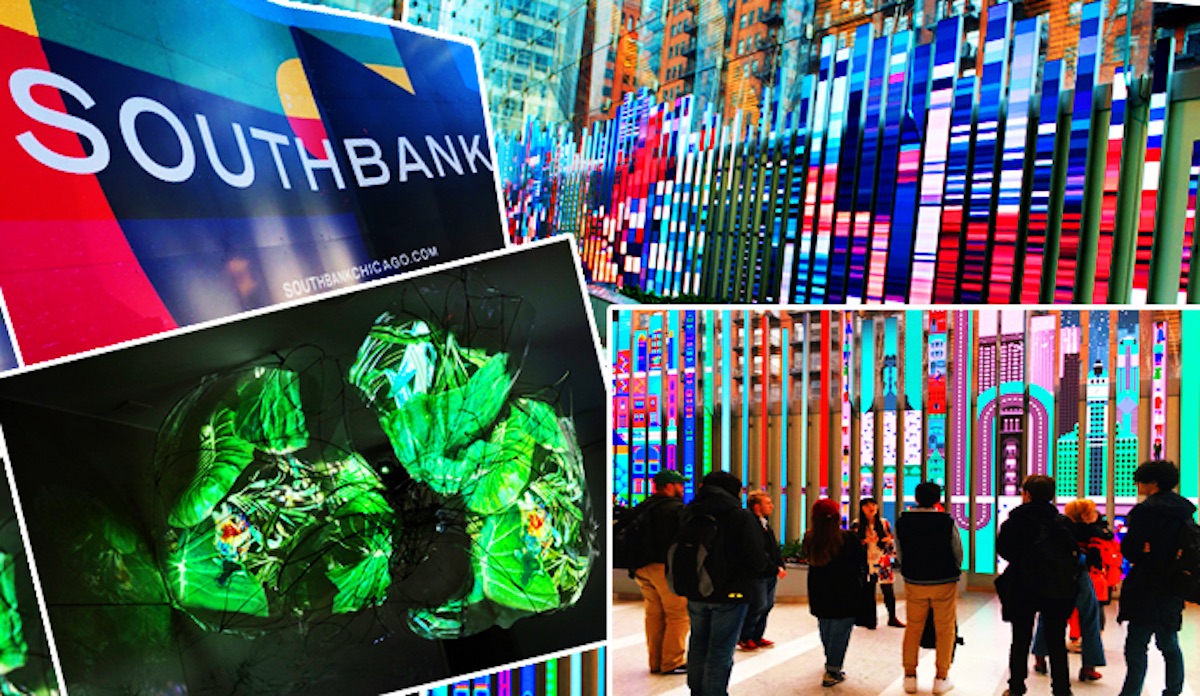Trending
Chicago developers turn to digital art displays to stand out and draw a crowd
As competition intensifies Downtown, landlords are investing in high-tech installations as another way to accommodate a new generation of tenants

A two-story video wall comprised of 89 LED blades stands as a visually striking entrance at the lobby of 150 North Riverside Plaza. The 150-foot-long display inside Riverside Investment & Development’s office tower combines art, architecture and technology, featuring works of Chicago artists and those from around the world, all-but stopping visitors in their tracks.
Called 150 Media Stream, the attention-grabbing display is also one of a growing number of art installations in commercial and residential developments around Chicago that tap into the digital age. The flashy works come at a time when competition among developers and property owners has intensified to differentiate their projects and cater to the changing needs of a new generation of tenants.
“The art budgets do appear to be increasing,” said Gail Lissner, managing director at consulting firm Integra Realty Resources. “As new buildings get built, developers are raising the bar. It’s another item for them to stand above the crowd.”
The displays can also be a not-so-subtle way to reimagine and throw a spotlight on an existing building, as in the September debut of “Art on the Mart.” That project has turned Vornado Realty Trust’s 4 million-square foot Merchandise Mart into a massive digital projection screen. Five days a week for two hours a day, the river-facing facade is a canvas for public art, with thousands of onlookers staring at and taking photos of the 88-year-old art deco building.
Artwork has long been a prominent feature in large developments around the city, particularly in downtown office buildings, though the focus has leaned more traditional. That was also the case with Lendlease’s 29-story Cooper at Southbank apartment building in Printers Row, which opened in September at 720 South Wells Street. The Cooper features work from artist Nick Albertson, whose abstract photography hangs in the lobby of the 452-unit building. Lendlease also commissioned 10 original pieces from artist David Wolske for the larger Southbank development.
As with many new developments around the Chicago, the Cooper is loaded with amenities like a “namaste nook” for private yoga lessons and a grill deck with rain-resistant widescreen TVs suspended above each grate.
But while those features are only for tenants, high-tech art displays are taking on a more central role because they can also serve as a form of public advertising in the digital age, developers and real estate experts said.
Tony Scacco, at Riverside Investment, said other factors were also at play to explain their recent prominence. The first is that the battle to ink large leases at Downtown developments has heated up, and the second is the pressure to meet the changing demands and desires of tenants.
More corporations are moving offices to Downtown, in part to attract the Millennial labor pool, Scacco said. That is a generation whose living and working habits have led developers to alter their offerings and amenities. That shift comes at a time when the suburban office market has hit a skid. The vacancy rate for that market crept up to 23.7 percent at the end of the second quarter, the highest it’s been since 2014, according to JLL.
“There’s just been fundamental changes with the manner in which companies of all types are using their office space,” Scacco said. Since the financial downturn, he said, companies have had to completely rethink how to attract Millennials. That hasn’t happened “for any generation previous.”
For developers — office and residential — that has meant a smaller, more dense living or working space, with more of an emphasis on amenities and features that offer “experiences,” like a rooftop terrace or a massive art installation.
“What we’re trying to do is create a unique and amenity-robust environment within which our clients can recruit and retain” employees, Scacco said.
Standing out
Taris Real Estate’s 900 West Washington luxury condo building is another new development using digital art technology, this one to help create an identity in a crowded market.
When completed, the 22-unit development in the changing West Loop neighborhood will include a lobby grand chandelier that doubles as a digital art installation, creating a whirl of color and light in the lobby that will project onto the building’s street-facing windows. Units will cost between $1.4 to $5.5 million.
That West Loop area has been setting records in the $1 million and over residential market, according to a Re/Max third quarter report. There were 43 sales of attached units in that luxury category through the end of October, compared to 16 last year and none five years ago.
As the prices climb higher, buyers expectations can also rise, for something bigger and better.
“It’s a recent trend to be more interactive,” said Taris’ Patrick Buck. “We wanted the building to look aesthetically good now and also fit into the community 20 years from now.”




